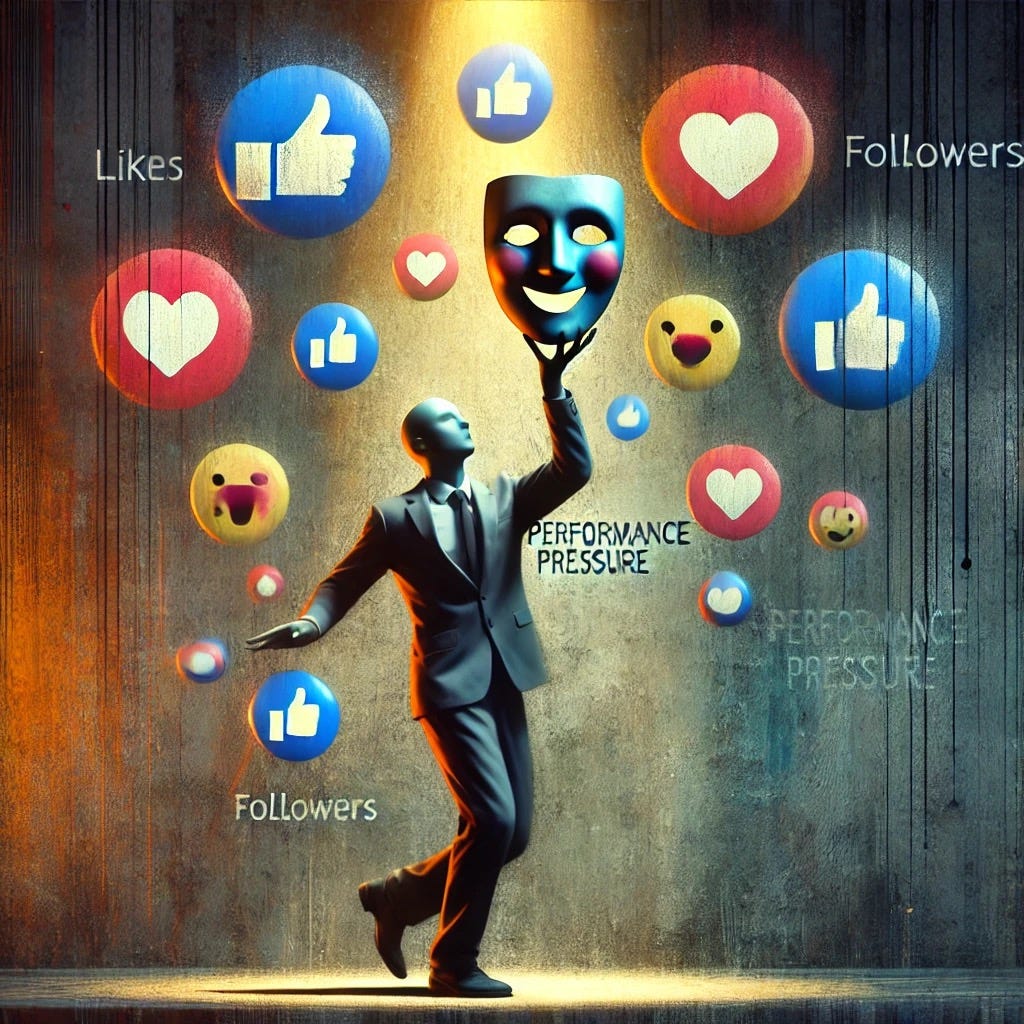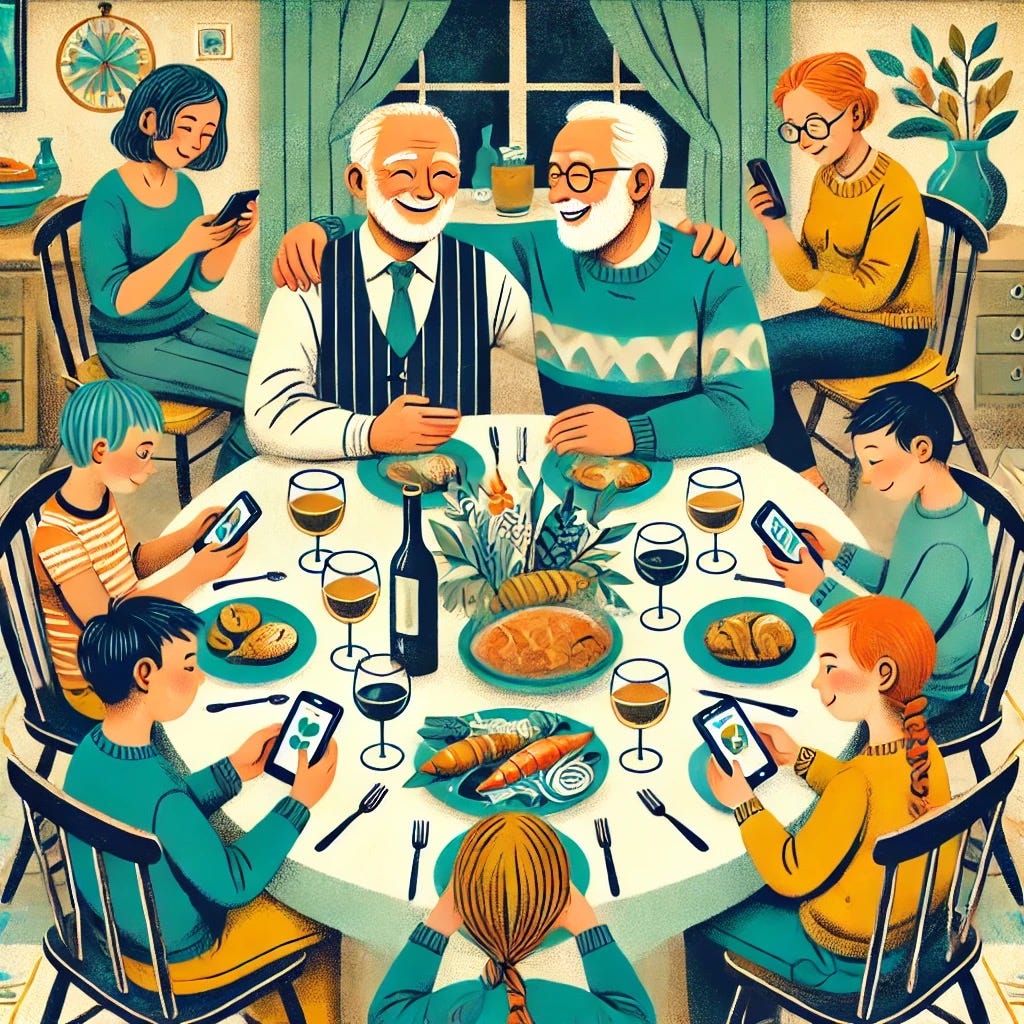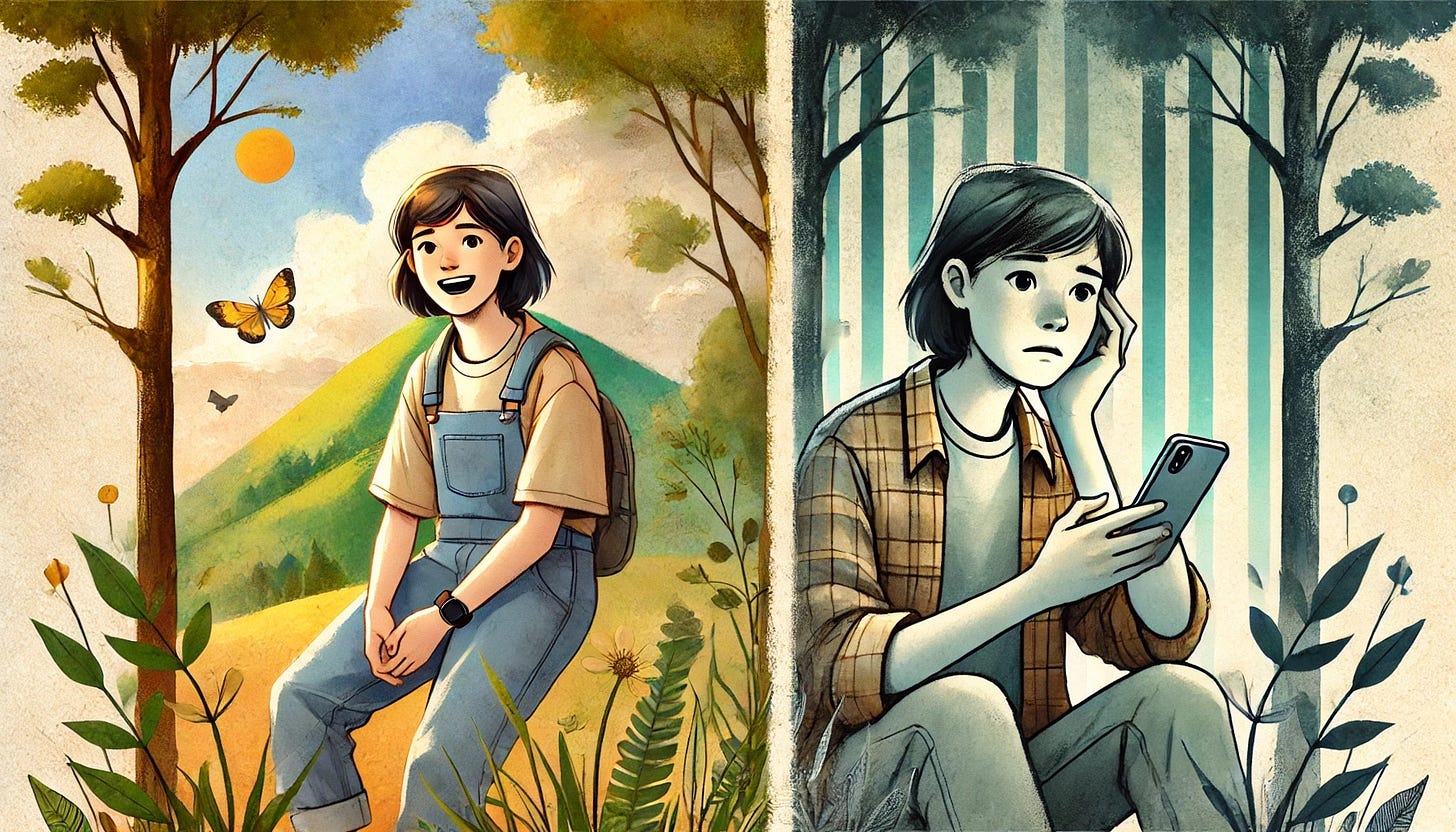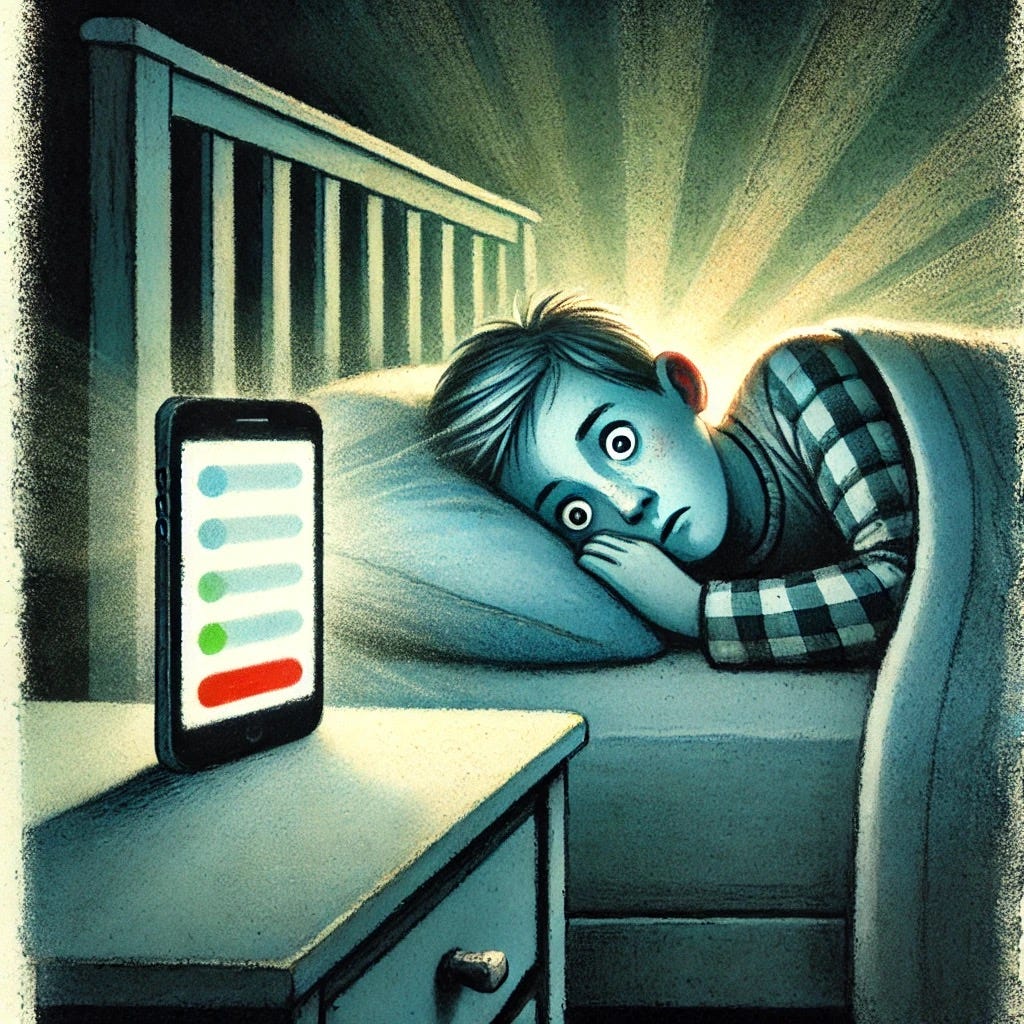Learn how social media contributes to anxiety in kids and teens, what parents can do to help, and why systemic changes like KOSA and COPPA matter for raising resilient digital natives.
Hey parents, hi educators, wassup counselors.
Beans here, plotting a revolution for digital natives having the best childhood imaginable.
Remember when the hardest tech decision we faced was choosing a baby monitor? Fast forward a few years, and now we’re decoding the labyrinth of apps, algorithms, and endless pings that shape our kids’ daily lives. It’s a lot to keep up with, isn’t it?
Last time, we unpacked Jean Twenge’s generational theory and how technology has reshaped Generation Z, making them arguably the most anxious generation yet. (Read last week’s post)
Today, we’re diving deeper into one of the culprits: social media. How did tools built to connect us morph into something that isolates and overwhelms? And more importantly, how can we help our kids navigate this world with confidence and calm?

Have You Seen This Child?
Who does this remind you of?
Katniss Everdeen (The Hunger Games):
Katniss uses social media-like propaganda to spark a revolution, but behind the scenes, she’s consumed by anxiety. Every move she makes is scrutinized, every decision amplified, leaving her questioning her self-worth.
Moana (Moana):
A natural leader, Moana faces her own version of “likes” as she battles the pressure of meeting her community’s expectations. What if her choices aren’t enough? What if she fails?
Anne Shirley (Anne of Green Gables):
Anne’s vivid imagination and creativity make her a star in her small community, but rejection and comparison threaten to dim her light. Sound familiar? Social media amplifies these same struggles for today’s kids.
These characters remind us of the immense pressure that comes with constant evaluation—a challenge kids face every day in the digital world.
Social Media by the Numbers
Social media isn’t just a part of kids’ lives—it’s a central feature. The stats paint a startling picture:
Prevalence of Use — Children Under 13: Nearly 40% of kids aged 8–12 use social media, despite platform age restrictions. Teenagers: A whopping 90% of teens use social media daily, with almost half reporting they’re online “almost constantly.”
Daily Usage — Overall Teens: In 2023, U.S. teens averaged 4.8 hours per day on social media. Girls: 5.3 hours daily, drawn to platforms like TikTok and Instagram. Boys: 4.4 hours daily, spending more time on YouTube and Snapchat. TikTok: Kids spend an average of 99 minutes a day on this short-video platform. Snapchat: Known for its quick, ephemeral communication, users clock in at 84 minutes daily.

How Did We Get Here?
Let’s rewind to 2010. The iPhone 4 introduced front-facing cameras, Instagram hit the scene, and selfies weren’t just fun—they became a form of currency. Likes, shares, and comments turned attention into a dopamine game.
For Gen Z, born into this ecosystem, social media feels less like a tool and more like a necessity. And while it has its upsides, the costs are undeniable.
The Good: Social media fosters connections. Kids can find niche communities, explore their passions, and advocate for causes they care about.
The Bad: Algorithms are designed to keep kids scrolling, not safe. This creates cycles of comparison, cyberbullying, and self-doubt.
The Ugly: Studies show social media disproportionately harms girls, amplifying appearance-based anxieties and self-criticism.

How Social Media Fuels Anxiety
Social media is often sold as a way to connect, share, and have fun. But here’s how it tips into anxiety:
Constant Comparison: Highlight reels on Instagram and TikTok make kids feel like they don’t measure up, triggering low self-esteem.
Fear of Missing Out (FOMO): Seeing friends hang out without them creates loneliness and compulsive checking of social media.
Cyberbullying: Online harassment is relentless and inescapable, leaving victims anxious and withdrawn.
Performance Pressure: Kids feel like they’re always “on stage,” chasing likes and validation.
Exposure to Disturbing Content: Algorithms amplify shocking or harmful posts, making the world feel scarier than it is.
Sleep Disruption: Late-night scrolling disrupts rest, leaving kids less equipped to handle stress.
Addiction: Designed to hook users, social media can lead to feelings of guilt and frustration over time lost.
Understanding these mechanisms helps us take action.

Fear-mongering or Valid Concern?
Critics argue that concerns over social media are just another round of moral panic—the latest in a long history of blaming technology for societal woes.
The Critics Say:
We’ve Heard This One Before: From comic books to video games, every generation has its scapegoat.
Don’t Be Helicopter Parents: Skeptics claim researchers like Twenge and Haidt encourage overprotective parenting.
Teach, Don’t Shield: Instead of fearing social media, teach kids to use it responsibly.
While I agree with those approaches, I can’t help but wonder: Didn’t my grandparents hear these same dismissals with cigarettes? Early warnings about their risks were ridiculed, and kids were even encouraged to smoke. Decades later, we know the “fear-mongers” were right about smoking.
Social media shares some striking parallels with tobacco:
Addictive by Design: Both are engineered to hook users—nicotine for cigarettes, dopamine cycles for social media.
Marketed to Youth: Features and influencers target kids at their most impressionable stages.
Slow Regulation: Just as it took years to regulate cigarettes, we’re only now addressing social media’s risks.
KOSA and COPPA: A Bipartisan Push for Safety
Two pieces of legislation aim to make the digital world safer for kids:
KOSA (Kids Online Safety Act)
Limits Harmful Content: Platforms must moderate content promoting self-harm, eating disorders, and more.
Empowers Parents: Tools to monitor and filter kids’ activity.
Requires Transparency: Platforms must disclose how algorithms impact minors.
COPPA (Children’s Online Privacy Protection Act)
Protects Kids’ Data: Requires parental consent for data collection.
Expands Protections: Proposed updates extend privacy rules to teens aged 13–17.
Both laws have bipartisan support because they prioritize kids’ safety, hold tech companies accountable, and empower families.

Finding the Balance
We don’t need to ban social media, but we also can’t ignore its risks. Striking a balance means:
Acknowledging the Risks: Like cigarettes, social media has pitfalls, but with awareness, kids can use it safely.
Empowering, Not Sheltering: Teach kids to navigate social media with emotional intelligence and self-regulation.
What Can Parents Do?
Create Device-Free Zones: Make dinner tables and bedrooms screen-free.
Model Healthy Behavior: Kids mirror us—so let’s be mindful about our own screen time.
Advocate for Change: Support policies like KOSA and COPPA to protect kids online.
Are We There Yet?
No! We’ve got more work to do.
But with education, advocacy, and a little courage, we can help our kids shape their relationship with social media instead of letting it shape them.
What about you?
How do you help your kids navigate social media?
What platform concerns you most?
If you could redesign social media, what’s the first feature you’d change?
Let’s keep this conversation going.
You Might Also Like
In our next post, we’ll explore misbehavior and discipline in the digital age. Until then, check out these resources:
Jon Haidt’s Substack “After Babel”: https://www.afterbabel.com/
Evidence section of the “The Anxious Generation” site: https://www.anxiousgeneration.com/resources/the-evidence
US Senate opinions on COPPA and KOSA: https://www.commerce.senate.gov/index.php/2024/7/senate-overwhelmingly-passes-children-s-online-privacy-legislation
Common Sense Media: https://www.commonsensemedia.org/articles/social-media




